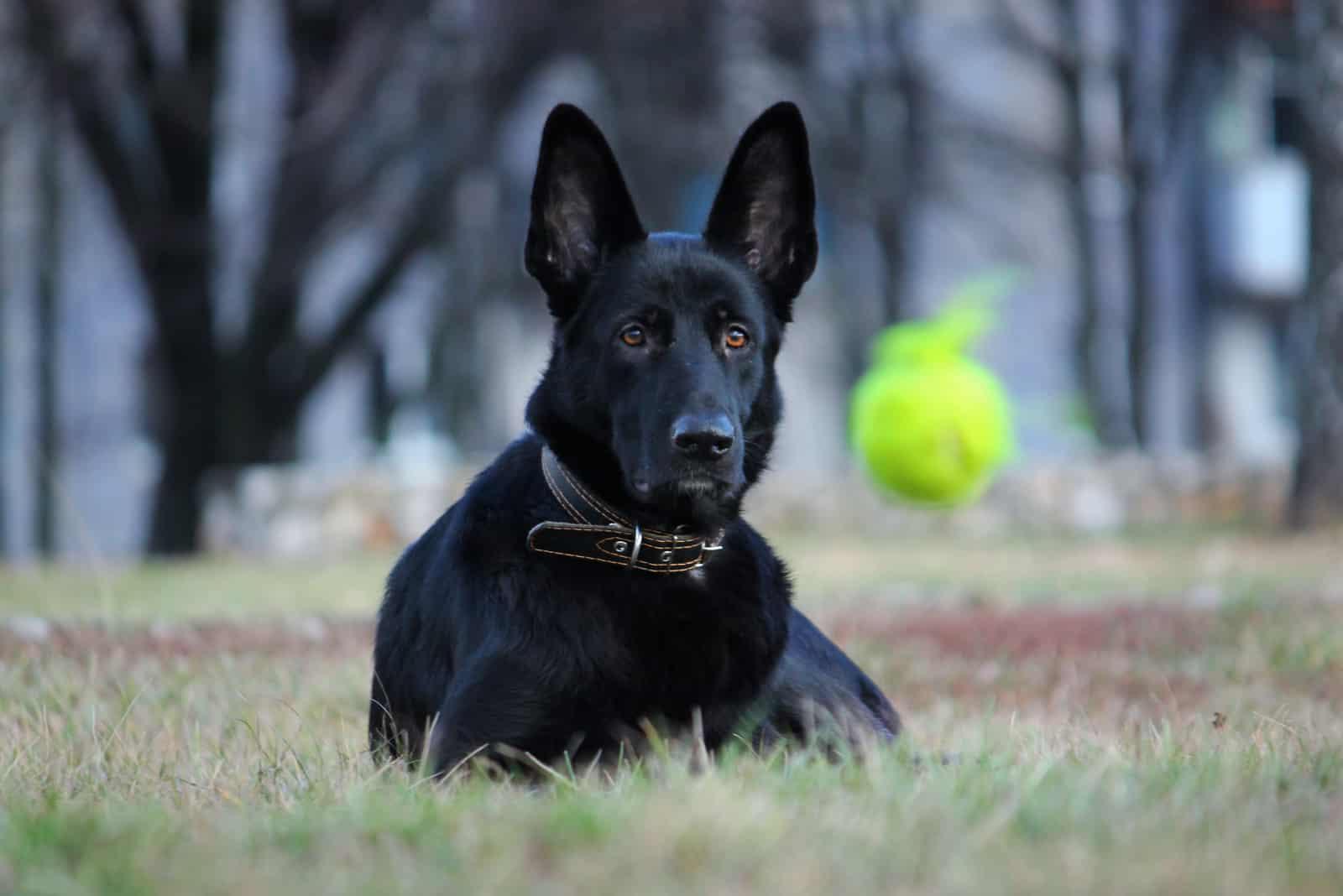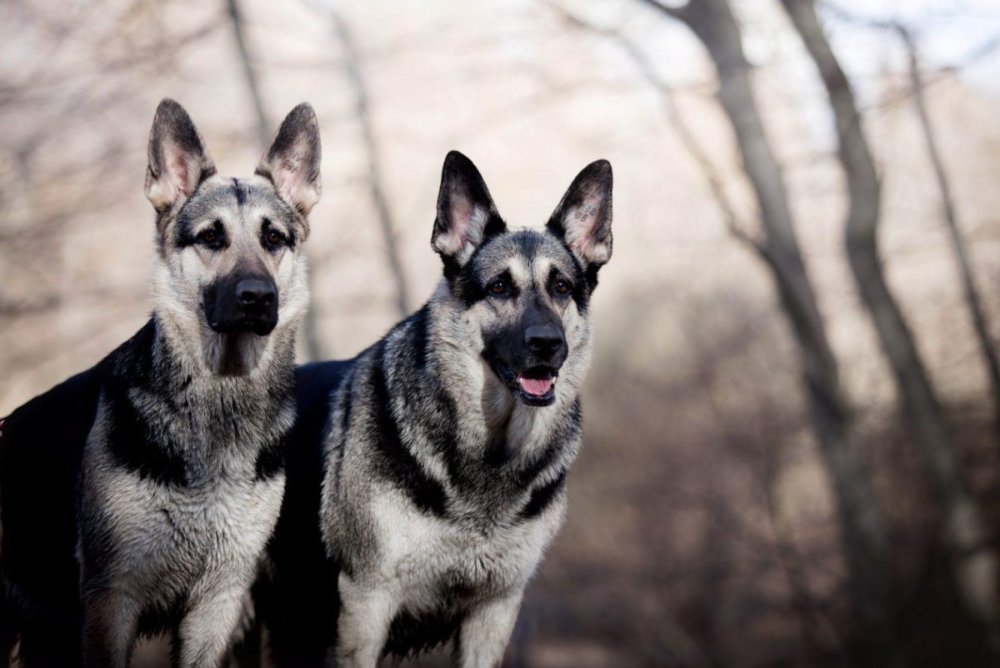- Breed Category: Working Dog
- Country of Origin: Russia
- Average Height: Males 66-76 cm, Females 62-72 cm
- Average Weight: Males 35-60 kg, Females 30-50 kg
- Average Life Span: 10-14 years
- Grooming Requirements: Moderate, regular brushing needed
- Exercise Requirements: High, needs daily exercise
- Coat Type: Double coat, dense
- Coat Color Variations: Black, sable, tan, grey
- Shedding Level: Moderate to high
- Ear Type: Erect, triangular
- Tail Type: Long, bushy
- Temperament: Loyal, protective, intelligent
- Intelligence Level: High
- Barking Tendency: Moderate
- Compatibility with Children: Good with proper socialisation
- Compatibility with Other Pets: Varies, early socialisation important
- Training Ease: Requires experienced handler
- Common Health Issues: Hip dysplasia, elbow dysplasia
- Dietary Needs: High-quality, balanced diet
- Energy Level: High
- Drooling Tendency: Low
- Sensitivity to Weather: Tolerates cold well
- Overall Maintenance Level: Moderate
- Original Purpose: Guard and working dog
- Year of Recognition by Kennel Clubs: Not widely recognised
- Apartment Friendly: Not ideal, needs space
- Best Suited For: Active families, experienced owners
- Cost of Ownership: Moderate to high
- Unique Traits: Strong protective instincts
The East European Shepherd Dog, often overshadowed by its more famous cousin, the German Shepherd, is a breed that deserves its own spotlight. Known for its intelligence and loyalty, this breed has a rich history and unique characteristics that make it stand out. Originally developed in the Soviet Union, the East European Shepherd was bred for its resilience and adaptability to harsh climates.
“The East European Shepherd is not just a dog; it’s a partner in every sense of the word.”
– Renowned canine expert, Dr. Alexei Petrov
This article aims to inform you about the breed’s distinct traits, its fascinating history, and how best to care for these remarkable dogs.
History and Origin

Early Development of the Breed
The East European Shepherd, a breed with roots in the Soviet Union, was developed in the mid-20th century. The goal was to create a dog that could withstand the harsh climates of Eastern Europe while maintaining the intelligence and versatility of its German Shepherd ancestors. Breeders focused on enhancing traits like strength, endurance, and adaptability, resulting in a robust and reliable working dog.
Role in Eastern European Working Environments
In Eastern Europe, these dogs were more than just pets; they were essential partners in various working environments. From guarding livestock to assisting in military and police operations, their roles were diverse and crucial. Their ability to adapt to different tasks made them invaluable in regions where conditions could be challenging and unpredictable.
Key Historical Figures
One of the pivotal figures in the breed’s development was Dr. Alexei Petrov, a renowned canine expert who played a significant role in refining the breed’s characteristics. His work ensured that the East European Shepherd not only met the physical demands of its environment but also excelled in intelligence and loyalty, traits that continue to define the breed today.
Physical Characteristics

Appearance
The East European Shepherd is a striking breed, known for its impressive size and commanding presence. Typically larger than the German Shepherd, these dogs boast a strong, muscular build that speaks to their working heritage. Their coat is dense and weather-resistant, often coming in shades of black and tan, sable, or even solid black. Distinctive markings, such as a dark mask or saddle, add to their unique appearance, making them easily recognisable.
Unique Physical Traits
One of the standout features of the East European Shepherd is its robust physique. These dogs are built for endurance and strength, with a powerful frame that supports their active lifestyle. Their ears are erect and alert, giving them an attentive expression, while their eyes, often dark and intelligent, reflect their keen awareness. This breed’s physical traits are not just for show; they are perfectly suited for the demanding roles they often undertake.
Temperament and Behaviour

Typical Personality Traits
The East European Shepherd is known for its loyalty and intelligence, making it a reliable companion. These dogs are highly energetic, always ready for action, and thrive when given a job to do. Their intelligence means they learn quickly, but it also means they need mental stimulation to keep them happy and engaged.
Suitability as a Family Pet and Working Dog
As a family pet, the East European Shepherd is protective and devoted, often forming strong bonds with family members. They are excellent watchdogs, always alert and ready to protect their loved ones. In a working environment, their adaptability and resilience make them ideal for various roles, from herding to search and rescue operations.
Interaction with Children and Other Animals
These dogs generally get along well with children, especially when raised with them. Their protective nature extends to the youngest family members, making them gentle yet vigilant playmates. With other animals, early socialisation is key. When properly introduced, they can coexist peacefully, though their strong prey drive means supervision is necessary around smaller pets.
Training and Exercise Needs

Importance of Early Training and Socialisation
Getting your East European Shepherd started with training and socialisation early on is crucial. These dogs are naturally intelligent and eager to learn, but they need guidance to channel their energy positively. Early exposure to different environments, people, and other animals helps them grow into well-rounded adults. This foundation is key to preventing behavioural issues down the line.
Recommended Training Techniques
Positive reinforcement is the way to go with these dogs. They respond well to rewards and praise, making training sessions enjoyable for both of you. Consistency is important, so keep commands clear and sessions regular. Incorporating play into training can also keep them engaged and motivated.
Daily Exercise Requirements and Activities They Enjoy
East European Shepherds are active dogs that need plenty of exercise to stay happy and healthy. Aim for at least an hour of physical activity each day. They love activities like running, hiking, and playing fetch. Mental stimulation is just as important, so puzzle toys and training games can help keep their minds sharp.
Health and Lifespan

Common Health Issues
East European Shepherds are generally healthy, but like any breed, they can be prone to certain health issues. Hip dysplasia is a common concern, given their size and active nature. Regular vet check-ups can help catch this early. They may also face issues like elbow dysplasia and certain heart conditions. Keeping an eye on their weight and ensuring they get enough exercise can mitigate some of these risks.
Average Lifespan and Health Tips
These dogs typically live between 10 to 14 years. To help them reach the upper end of that range, a balanced diet and regular exercise are crucial. High-quality dog food that meets their nutritional needs is a must. Regular vet visits for vaccinations and health screenings will keep them in top shape. Mental stimulation is just as important as physical activity, so keep their minds engaged with training and interactive toys.
Preventative Care Recommendations
- Schedule regular vet check-ups to monitor their health.
- Maintain a balanced diet to prevent obesity and related health issues.
- Ensure they get daily exercise to keep their joints and muscles strong.
- Brush their teeth regularly to prevent dental issues.
- Keep their vaccinations up to date to protect against common diseases.
Grooming and Maintenance

Coat Care and Grooming Routines
The East European Shepherd’s coat is dense and weather-resistant, requiring regular grooming to keep it in top condition. A weekly brush is usually enough to remove loose hair and prevent matting. During shedding seasons, you might need to increase this to a few times a week. A slicker brush or an undercoat rake works well for this breed, helping to reach the thick undercoat.
Shedding and Seasonal Grooming Tips
These dogs are known to shed heavily, especially during the change of seasons. Spring and autumn are peak shedding times, so be prepared for more frequent grooming sessions. A good bath during these periods can help loosen dead hair, making it easier to brush out. Regular grooming not only keeps their coat healthy but also reduces the amount of hair around your home.
In addition to brushing, check their ears regularly for debris and clean them as needed. Trim their nails every few weeks to prevent overgrowth, which can be uncomfortable for them. With consistent grooming, your East European Shepherd will not only look great but also feel comfortable and healthy.
Diet and Nutrition

Nutritional Needs for Optimal Health
Feeding your East European Shepherd the right diet is crucial for their health and vitality. These dogs need a balanced diet rich in protein to support their muscular build and active lifestyle. Look for high-quality dog food that lists meat as the first ingredient. Omega-3 and omega-6 fatty acids are also important for maintaining a healthy coat and skin.
Foods to Include and Avoid
Include lean meats, fish, and vegetables in their diet. Whole grains like brown rice and oats can provide necessary carbohydrates. Avoid foods high in fillers, artificial preservatives, and excessive fats. Chocolate, onions, and grapes are toxic to dogs and should be kept out of reach.
Feeding Schedules and Portion Recommendations
Establish a consistent feeding schedule to help regulate their digestion and energy levels. Adult East European Shepherds typically do well with two meals a day. Puppies may need three to four smaller meals. Portion sizes depend on their age, weight, and activity level, so consult your vet for tailored advice. Always provide fresh water to keep them hydrated.
Fun Facts and Trivia
Interesting Tidbits About the Breed
The East European Shepherd is often mistaken for the German Shepherd, but it has its own unique charm. Did you know that this breed was specifically developed to handle the cold climates of Eastern Europe? Their thick, weather-resistant coat is not just for looks; it’s a testament to their resilience. These dogs are also known for their incredible work ethic, often excelling in roles that require both physical and mental stamina.
Famous East European Shepherds in Media or History
While not as widely recognised in media as some other breeds, the East European Shepherd has had its moments of fame. In the Soviet era, these dogs were often featured in films and literature as symbols of loyalty and strength. They were also used in military and police roles, showcasing their versatility and intelligence. One notable East European Shepherd, named “Zvezda,” was celebrated for her role in search and rescue missions, earning accolades for her bravery and skill.
Final Thoughts
The East European Shepherd is a remarkable blend of strength and loyalty. This breed’s unique traits make it an exceptional companion for those who appreciate its working heritage. Balancing high energy and intelligence, these dogs thrive in environments that challenge both their minds and bodies. With proper care, training, and socialization, they can be both devoted family members and reliable working partners. Embrace the journey of owning an East European Shepherd, and you’ll find a loyal friend for life.
